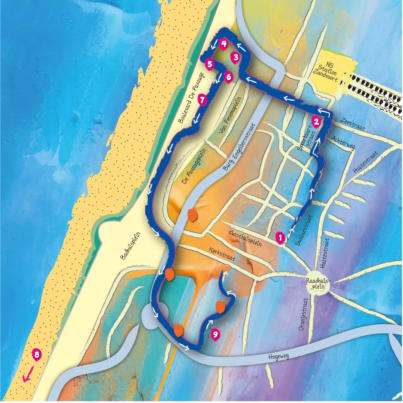
HUGO KAAGMAN STENCIL KING
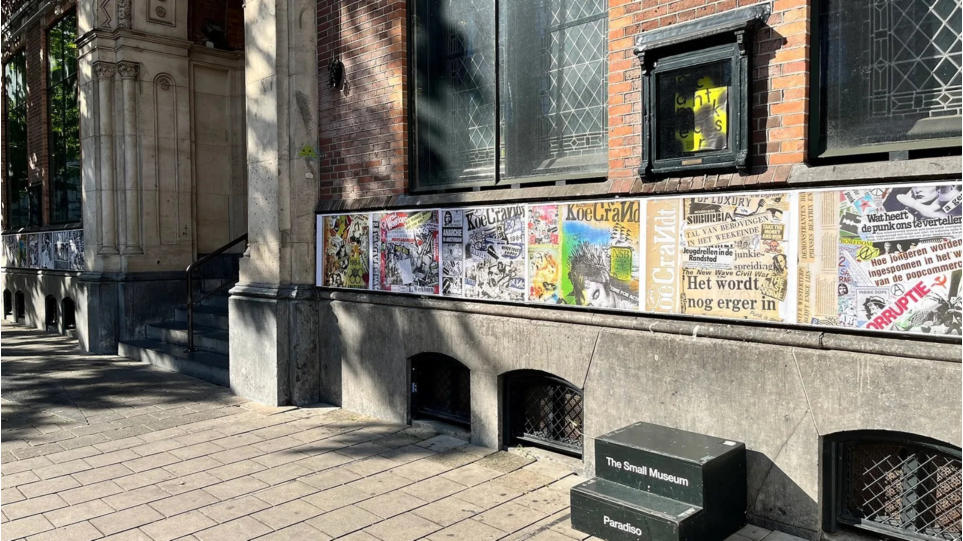
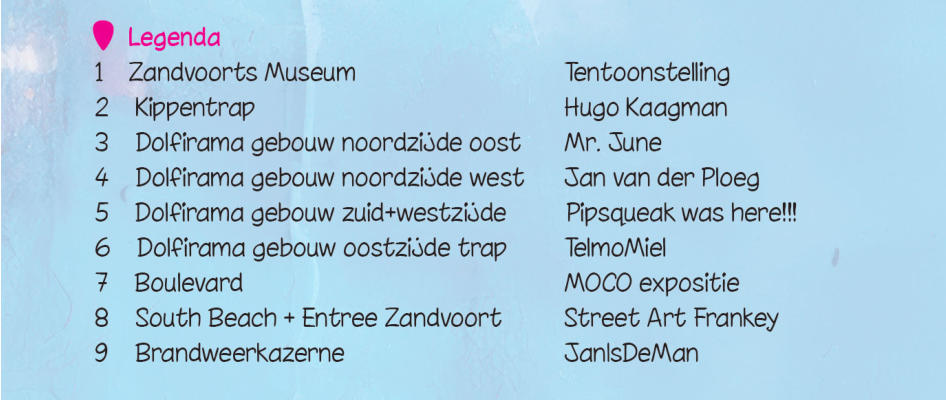


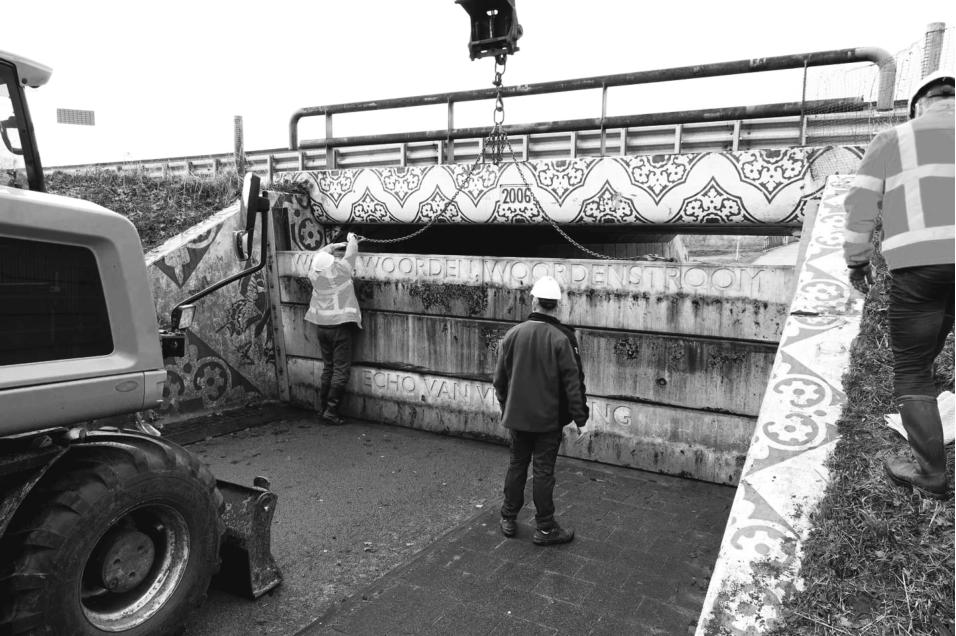
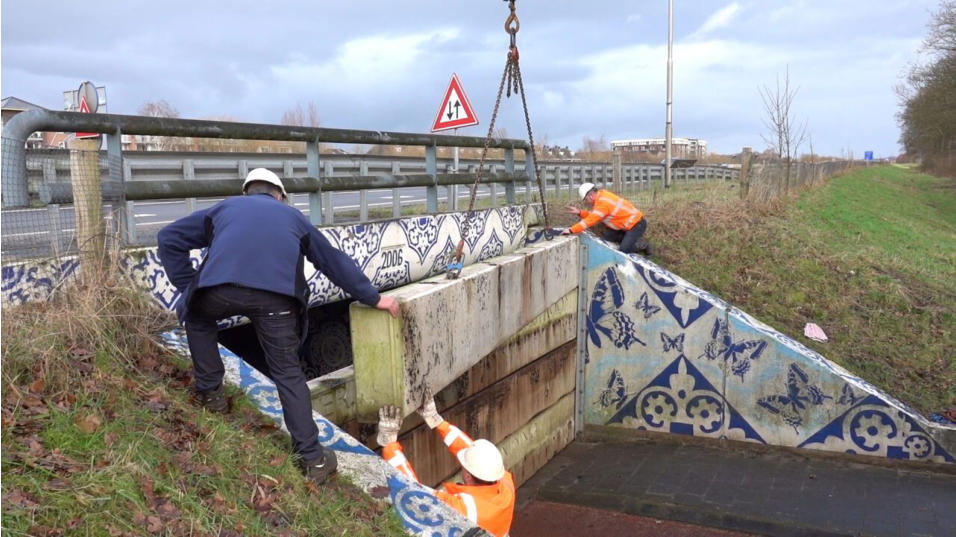

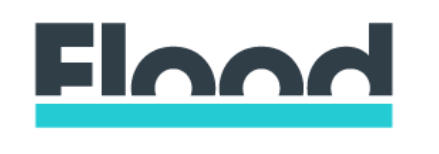
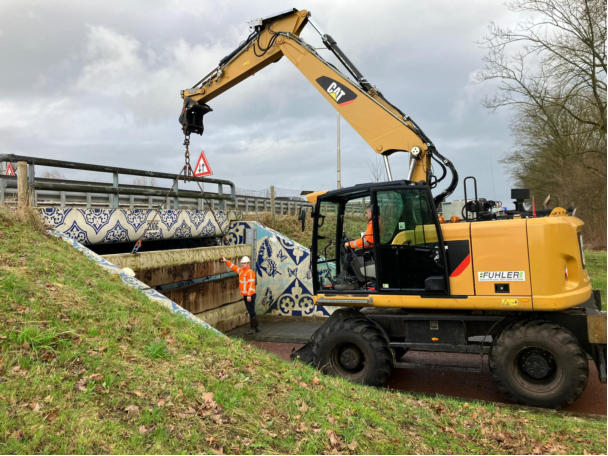
From the vaults (1980)
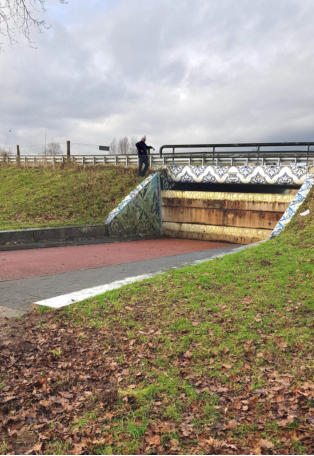
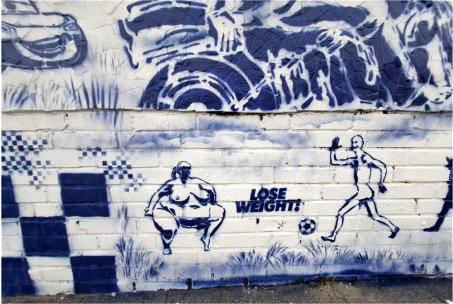
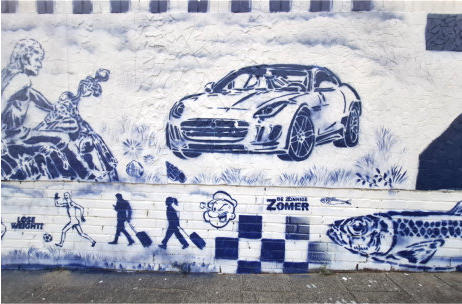

A Street Art History of Stencil Graffiti
Dr. Ulrich Blanché Heidelberg 2025
Hugo Kaagman and Punk Stencils in Amsterdam British Punk fanzines also inspired the punk scene in Amsterdam.174 One of their main protagonists,
punk stencil pioneer Hugo Kaagman (*1955) cited the UK zine Sniffin’ Glue (1976–77) as inspiration to start his own punk zine, KoeCrandt in 1977.
Maybe the most known Dutch punk graffiti writer, Dr. Rat (born Ivar Vičs ,†1981), was inspired by punk band graffiti he had seen in London during a
school trip. As a teenager, he also saw black gothic-style German WWII inscriptions in bunkers near Ijmuiden, which he copied later.175 Already in
1979, the very year UK punk band Crass issued their influential album Stations of the Crass with their punk stencils on the cover (fig. 36), Kaagman
copied the Crass logo and one of their slogans “Sterile Vision” when he stencil-spray-painted on the wall of the Amsterdam punk location Gallery
Anus.176 T he stenciled Crass logo and another Crass illustration of a broken gun also appeared in punk stencil/paper collage paintings from 1979,
which Kaagman signed “Amaril lo.”177 From 1979 onwards, the Dutch version of The Faith of Graffiti, Jon Naar’s 1974 photo book about early
American freehand style-writing marker pen tagging graffiti with a text by Norman Mailer, became the bible of Amsterdam punk at that time, as 172
When asked about his inspiration and whether he would imitate the stencil graffiti artist Blek Le Rat, Banksy replied that he was inspired by Robert del
Naja, who, like him, started graffiti in Bristol, albeit a decade earlier, see Banksy Interview with Shepard Fairey for Swindle Magazine, No. 8, 2006.
https://web.archive.org/web/20071027070144/http:// swindlemagazine.com/issue08/banksy/ (accessed May 1, 2024) and Banksy: FAQs, 2012,
accessed 25.10.2023, https://web.archive.org/web/20120103163406/http://www.banksy. co.uk/QA/qaa.html (accessed May 1, 2024). 173 In four
cases, Banksy published gimmick stencils with his own motifs as supplements, for example to interviews with himself, see Sleazenation Magazine,
Vol. 2, No. 18, July 1999, Bizarre Magazine, June 2001, Flaunt Magazine, December 2001, Creative Review, April 2002. 174 CAT22 and Hugo
Kaagman cited in Remko Koopman, Hein Sonnemans, Marcel van Tiggelen: Amsterdam Graffiti. The Battle Of Waterloo. 5 jaar graffiti-historie op het
Water looplein/Mr. Visserplein (1978–2003). Amsterdam 2004, p. 13, 21. 175 Again, De Scene, et al: Amsterdam on Tour. The Early Signs of Dutch
Graffiti.Amsterdam 2019, p. 27, 44. 176 Illustrated in Hugo Kaagman. Stencil King. Amsterdam 2009, p. 13, 16 177 Illustrated in Hugo Kaagman.
Stencil King. Amsterdam 2009, p. 15–16. DIY Punk Stencils 287 Kaagman and other Amsterdam punks stated.178 Between 1978 and 1982, punk
graffiti had a strong presence in Amsterdam.179 Kaagman cut his first stencil in 1977,180 1978,181 or 1979.182 Together with Diana Ozon, who also
used punk stencils, as did her sister under the pseudonym Kreng,183 and Dr. Rat,184 Kaagman founded the squat punk club/gallery DDT666 in 1978.
From 1979 onwards, psychedelic zebra patterns, inspired by a trip to Africa, became Kaag man’s trademark.185 DDT666 was renamed Gallery Anus
(1979), then Gallery Ozon (1980), and Gallery Zebra (1981). Kaagman (fig. 40), Ozon, Dr. Rat, and other punks painted the walls, including with
stencils, sold zines and stenciled T-shirts. Amster dam punk stencil tags around 1980 were also Sneeuwvrouw, Work Mates, Stuf Vrij, eNd, BOZZ, Anti
City Circus, Kapsones, Dressed to Kill, Beatrut, and Dodo.186 Anus Pelikanus used cardboard stencils with political messages, but also plastic stencil
tools he made with a jigsaw to work more precisely and to create a stencil that lasted longer and did not bend on the walls while spraying.187 Like
Kaagman (fig. 40), Dr. Rat’s 178 Cat22 in Remko Koopman, Hein Sonnemans, Marcel van Tiggelen: Amsterdam Graffiti. T he Battle Of Waterloo. 5
jaar graffiti-historie op het Waterlooplein/Mr. Visserplein (1978–2003). Amsterdam 2004, p. 13; Hugo Kaagman. Stencil King. Amsterdam 2009, p. 10-
11; Again, De Scene, et al: Amsterdam on Tour. The Early Signs of Dutch Graffiti.Amsterdam 2019, p. 28; Already in 1979, “Subway graffiti” was an
inscription on the squat Gallery Anus later painted by Kaagman, see photo by Martin Alberts, Amsterdam, Sarphatistraat 60 62, 23 October 1979,
https://archief.amsterdam/beeldbank/ detail/28d7d6f9-d42b-983d-518b-a394f17c70fb/media/1059dc8b-244c-328a-1af0
b30f04f36ba4?mode=detail&view=horizontal&q=23%20oktober%201979%20Alberts,%20
Martin&rows=1&page=20&fq%5B%5D=search_s_sk_vervaardiger:%22Alberts,%20 Martin%22 (accessed May 1, 2024). 179 Hugo Kaagman. Stencil
King. Amsterdam 2009, p. 10–11. 180 Samantha Longhi, Benoît Maître: Paris Pochoirs. Paris 2011, p. 25. 181 Hugo Kaagman. Stencil King.
Amsterdam 2009, p. 11. 182 Hugo Kaagman quoted in Remko Koopman, Hein Sonnemans, Marcel van Tiggelen: Amsterdam Graffiti. The Battle Of
Waterloo. 5 jaar graffiti-historie op het Waterlooplein/ Mr. Visserplein (1978–2003). Amsterdam 2004, p. 21. 183 Punk Graffiti Archives: The
Netherlands. Berlin/Madrid 2019, p. 105–106. 184 See photo by Henk Schiffmacher in De graffiti-praktijk van dokter Rat, in: Nieuwe Revu Nr. 49,
1979, p. 48–49. 185 Hugo Kaagman quoted in Remko Koopman, Hein Sonnemans, Marcel van Tiggelen: Amsterdam Graffiti. The Battle of Waterloo.
5 jaar graffiti-historie op het Waterlooplein/Mr. Visserplein (1978–2003). Amsterdam 2004, p. 21–23. 186 De Scene, et al: Amsterdam on Tour. The
Early Signs of Dutch Graffiti. Amsterdam 2019, p. 38–39. 187 Anus Pelikanus quoted in Dirk Korf (Ed.): AMxxxDAMNED GRAFFITI and the BÄRLIN
connection. Amsterdam 1983, p. 14; Anus Pelikanus quoted in De Scene, et al: Amsterdam on Tour. The Early Signs of Dutch Graffiti. Amsterdam
2019, p. 40. 288 A Street Art History of Stencils group SKG (Stad Kunst Guerilla) [City Art Guerilla] also made stencils of riot police officers in the Paris
68 tradition.188 Kaagman, alias Amarillo, alias Stencil King, became the most influential stencil graffiti pioneer in 1980s Netherlands. He seems to
have been the only one in the usual documented photo material who worked with more than two colors and who made stencils bigger than DIN A3
size, although Kaagman’s single stencil tools were not huge or life-size on their own—only in combination (fig. 40a). Most Amsterdam punk stencils
were the usual one-layer text tag stencils or used icon symbols like a raised fist, a riot policeman, a dodo, a cannabis leaf, or a yeti footprint.189
Tristan Manco compared Kaagman’s role as a stencil pioneer in Amsterdam to Alex Vallauri in São Paulo around 1980, Blek in Paris in the 1980s, and
Banksy in Bristol in the late 1990s.190 Already in 1986, Manco was impressed by Kaagman’s huge legal stenciled fence mural on Amsterdam’s street
Waterlooplein from 1983 or 1984,191 “made up of hundreds of different stencils.” It was Kaagman’s opus magnum and best known work of that
period:192 “I 1983 I made a legalised [sic] fence mural on Water looplein, a KoeCrant on panels, sixty meters of political and social commentary,
Arabic patterns, zebra motifs.”193 Kaagman proclaimed an “electronic revolution” combined with exotic animals in a concrete jungle, fragments from
comics, punk, 1968, music, pop and resistance culture on this ephemeral though legal wall. Kaagman was the f irst stencil virtuoso combining
hundreds of multicolor pop art stencils in his wallpa per, pattern-like all-over composition stencil compositions in punk collage tradition. Kaagman did
not tell a story like Vallauri (fig. 31), who created similar large stencil compositions from mostly rather small stencils, Kaagman (fig. 40) didn’t use
many silhouettes, instead he used detailed stencils with hints and fragments that could be combined in very different ways, almost like fencing sold by
the meter.194 His stencils were often playful, full of humor and political criticism and/or echoed his degree in social geography.
188 Illustrated in De Scene, et al: Amsterdam on Tour. The Early Signs of Dutch Graffiti. Amsterdam 2019, p. 29, 38, 42; Hugo Kaagman. Stencil King.
Amsterdam 2009, p. 8, 12, 17, 20, 21, 39, 40. 189 De Scene, et al: Amsterdam on Tour. The Early Signs of Dutch Graffiti. Amsterdam 2019, p. 38–39.
190 Tristan Manco: Introduction. In: Hugo Kaagman. Stencil King. Amsterdam 2009, p. 7. 191 The signature in Riout et all (ed.): Le Livre Du Graffiti.
Paris 1985, p. 95 or Hugo Kaagman. Stencil King. Amsterdam 2009, p. 37 states “1984,” Kaagman said the fence was commis sioned in 1982 and
finished in 1983, see Hugo Kaagman. Stencil King. Amsterdam 2009, p. 28, 34,36. 192 An overview with many photos and a map see
http://www.kaagman.nl/index%20cv.htm (accessed May 1, 2024). 193 Hugo Kaagman. Stencil King. Amsterdam 2009, p. 28. 194 Ger Kraaij: Uniek
schuttingwerk per meter te koop [Unique fence work per meter for sale]. Zo gaat dat in Amsterdam. Unidentified Newspaper clipping, Amsterdam, ca
1983–1984, http://www.kaagman.nl/index_htm_files/254.jpg (accessed May 1, 2024). DIY Punk Stencils 289 Manco did not know Kaagman’s name
when he saw the fence, and did not include him in his 2002 book Stencil Graffiti, but he later invited him to the Banksy-organized outdoor stencil
graffiti group show Cans Festival in 2008 and wrote an introduction for Kaagman’s retrospective book in 2009.195 The same stencil mural was already
depicted in Dirk Korf’s AMxxxDAMNED GRAFFITI from 1983196 (uncredited though) and in Riout’s enormously influential book Le livre du graffiti from
1985,197 again uncred ited, although Kaagman’s signature is clearly readable on the photoin Riout’s book. A detailed view of that mural was also
published as an—again uncredited—postcard in Germany in the mid-1980s.198 Johannes Stahl mentioned Kaagman briefly as a mostly legally
working “post-graffiti” artist in 1988, but he did not appear in van Treeck’s Das grosse Graffiti-Lexikon (1993, 1998, 2001) or his book z (2000, edited
with Sibylle Metze-Prou). Around 1983 to 1984, the American style-writing tradition took over in Amster dam and Kaagman stopped working illegally.
He remained a stencil graffiti phenome non on his own, bound in time and place to punk Amsterdam around 1980.

Download the book for free
